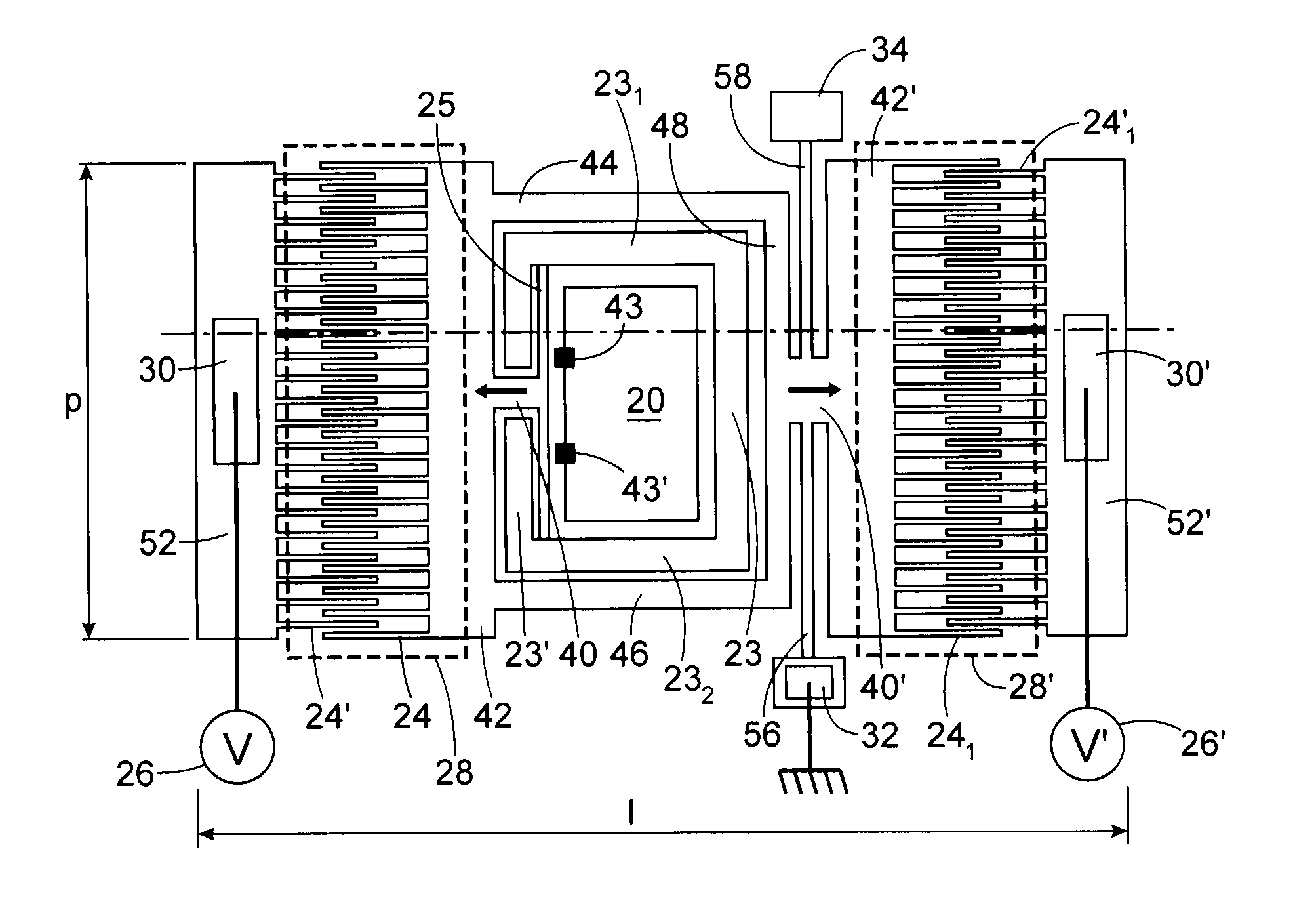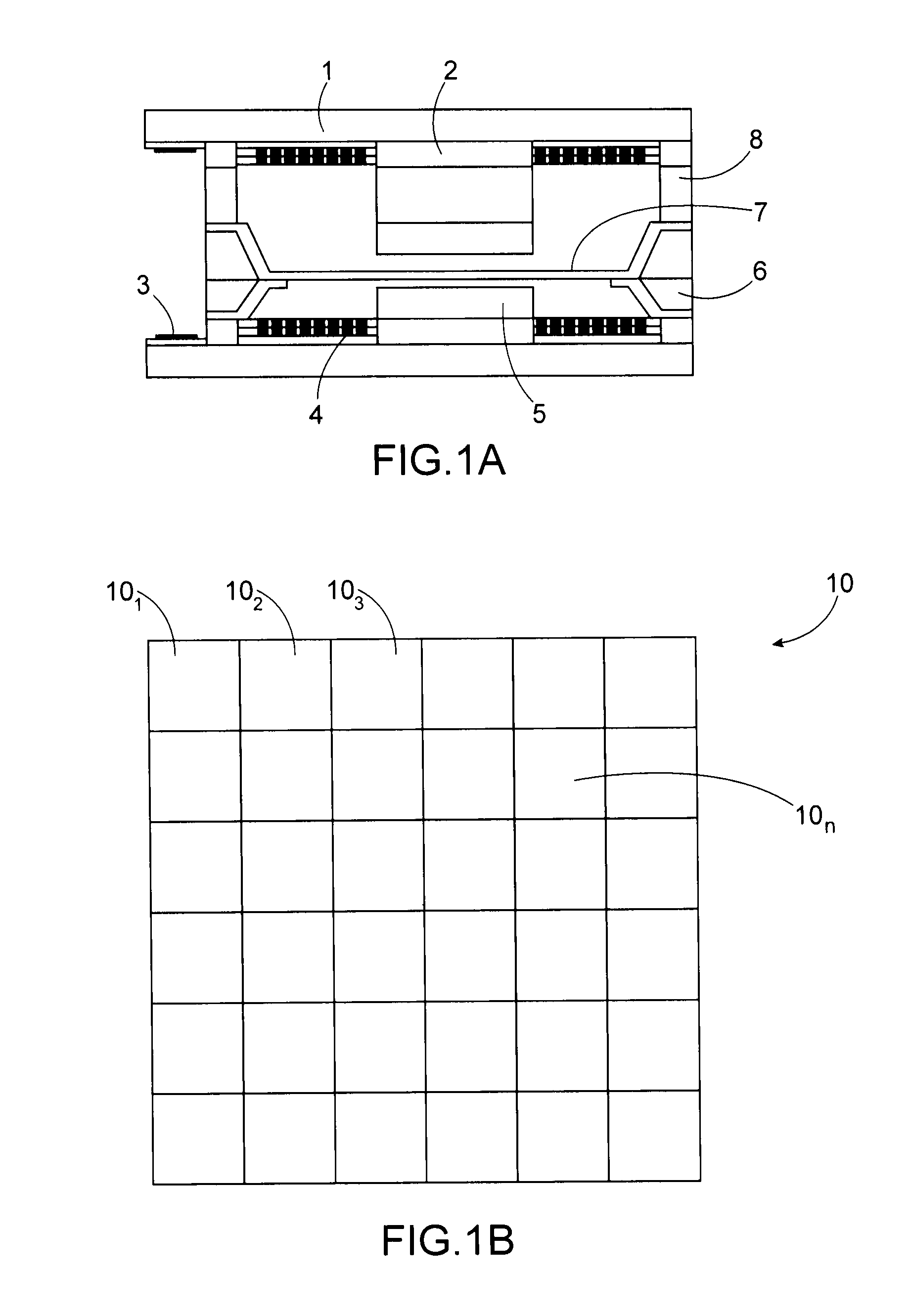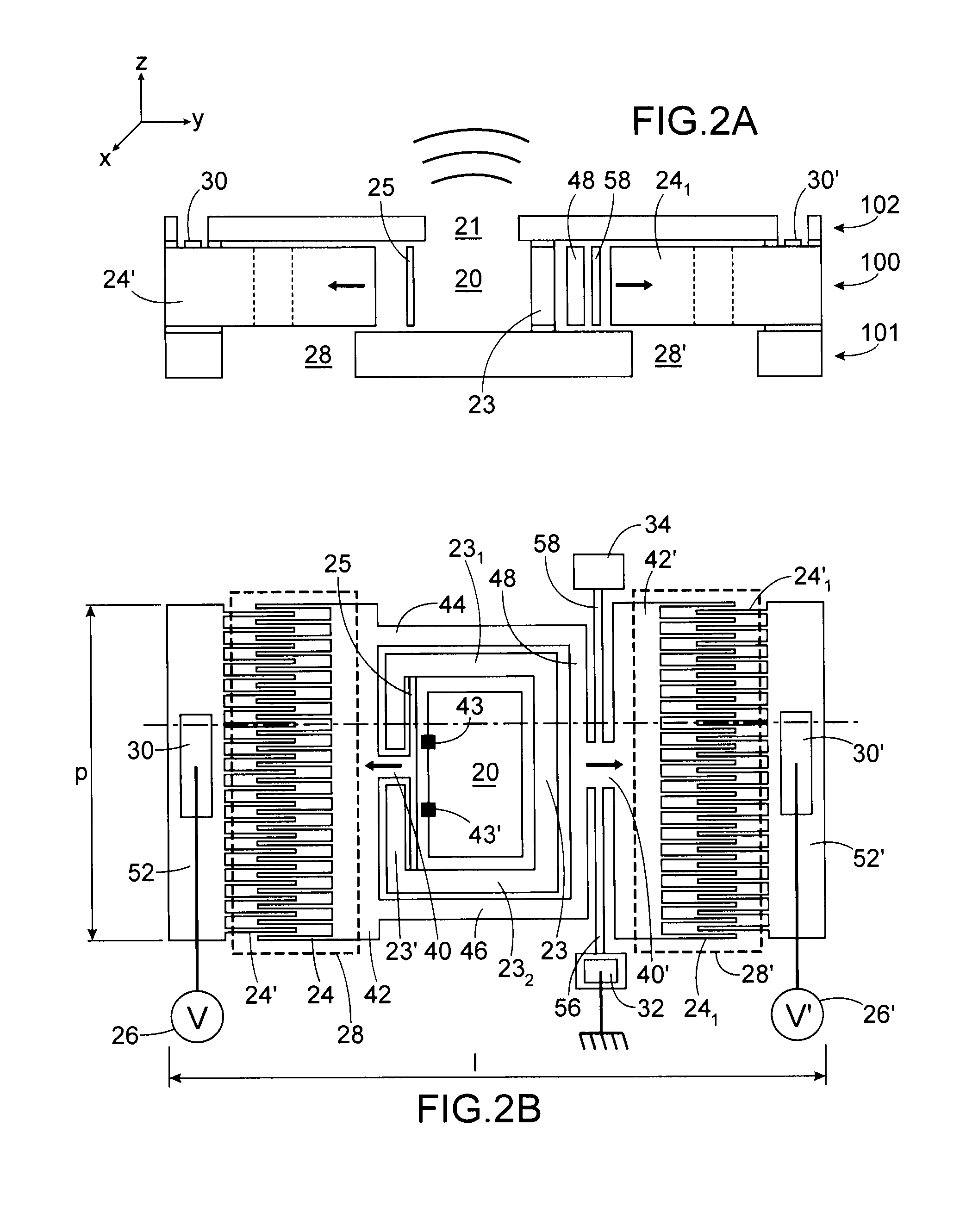MEMS-type pressure pulse generator
a technology of pressure pulse generator and nems type, which is applied in the direction of loudspeakers, instruments, sound producing devices, etc., can solve the problems of sound level, bass restoration, and limited amplitude of nems type, and achieve the effect of easy monitoring of the shape of the pressure pulse caused by the pressure pulse, good response linearity, and good controllability
- Summary
- Abstract
- Description
- Claims
- Application Information
AI Technical Summary
Benefits of technology
Problems solved by technology
Method used
Image
Examples
third embodiment
[0128]A third embodiment is shown in side and top views in FIGS. 4A and 4B. FIG. 4A is a cross-sectional view along a plane, the outline A1A′1 of which is visible in FIG. 4B (top view).
[0129]A difference relative to FIGS. 2A-2B lies in the contacts 301, 30′1, 321, which here are on the rear face, i.e. on or in the substrate 101. Another difference lies in the structure of the wall 25.
[0130]The structure of the wall 25 is of the type having a rigid central part framed by two parts 253, 255 forming a “spring,” and which are deformable. Under the effect of the actuating means, the rigid part moves, the parts 253, 255 being deformed. These parts also return the rigid part to the initial position when the actuating means returns to its initial state, after excitation. These parts 253, 255 form spring connections at the ends of the rigid part. Here there is a so-called “piston” effect or movement of the mobile part. But it would also be possible to use, in this embodiment, the deformable ...
fifth embodiment
[0157]A fifth embodiment, illustrated in FIG. 6 in top view, includes means for producing a thermal excitation (through bimorph or asymmetrical effect) applied to a deformable membrane. This means is for example of the thermal actuator or piezoelectric type. The structure of this means and its operation is for example described in the article “Time and frequency response of two-arm micromachined thermal actuators R Hickey et al- 2003 J. Micromech. Microeng. 13-40.” Information regarding the operation of the bimorphic actuator is available at: http: / / www.pi-france.fr / PI%20Universite / Page20%20.htm. In summary, a constraint in the plane of one of the layers of a multi-layer stack (if there are two, it is called a bimorph) causes a displacement of this stack in the direction perpendicular to the plane of the layers.
[0158]Two sets of means for producing a thermal excitation are shown in FIG. 6, but there can be only one, in which case there is actuation in only one direction (either pres...
sixth embodiment
[0159]A sixth embodiment is shown in FIGS. 7A (cross-sectional side view) and 7B (top view).
[0160]It includes a means for producing an electrostatic actuation, of the flat piston type, on several parallel cavities 20, 20′, 20″, 20″′ (in particular for cMUT). These cavities, or their corresponding openings 21, can be closed by a flexible membrane 281, which for example makes it possible to prevent dust or moisture from entering the device in the case of a loudspeaker-type operation. In the case of cMUT operation, this membrane can also vacuum seal or partially vacuum seal the device (a cMUT working at the resonance). It can be noted that this membrane 281 can also be arranged on the other face of the substrate 102 as illustrated by the membrane 281′ in broken lines in FIG. 7A. This closing system of the cavity 21 can also be implemented in the context of the preceding embodiments.
[0161]This device also includes two cavities 280, 280′, each forming a “back volume,” which is closed and...
PUM
 Login to View More
Login to View More Abstract
Description
Claims
Application Information
 Login to View More
Login to View More - R&D
- Intellectual Property
- Life Sciences
- Materials
- Tech Scout
- Unparalleled Data Quality
- Higher Quality Content
- 60% Fewer Hallucinations
Browse by: Latest US Patents, China's latest patents, Technical Efficacy Thesaurus, Application Domain, Technology Topic, Popular Technical Reports.
© 2025 PatSnap. All rights reserved.Legal|Privacy policy|Modern Slavery Act Transparency Statement|Sitemap|About US| Contact US: help@patsnap.com



